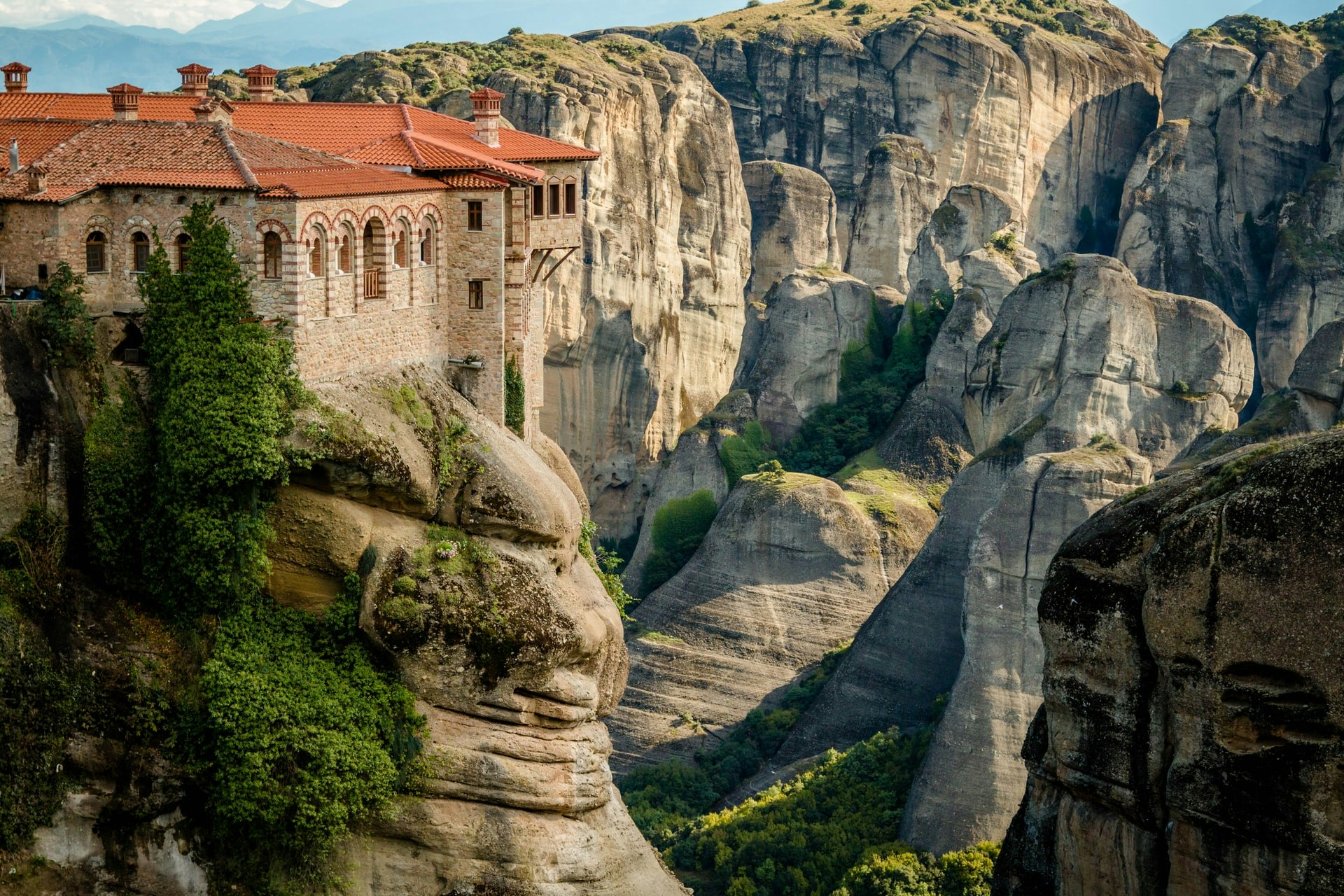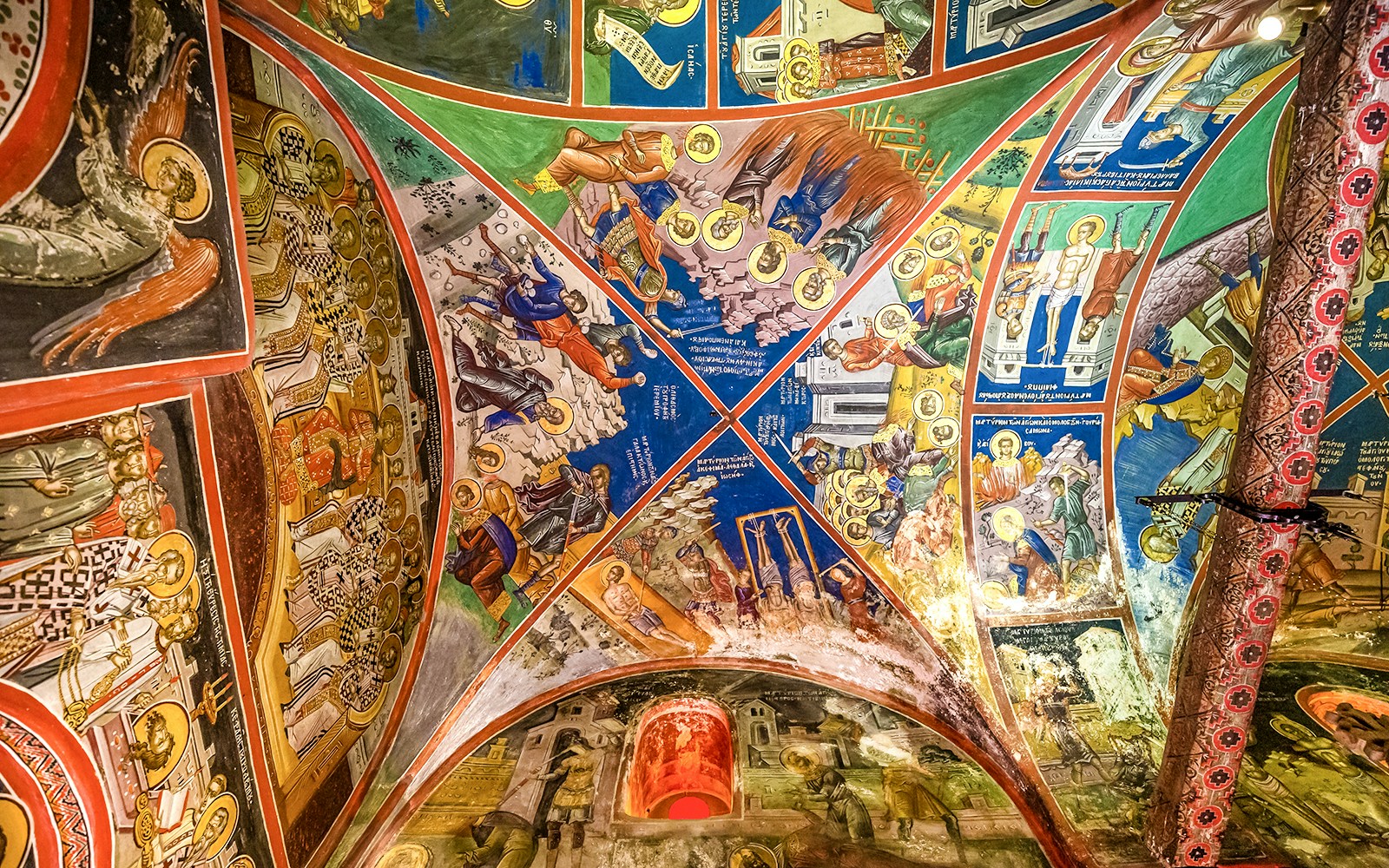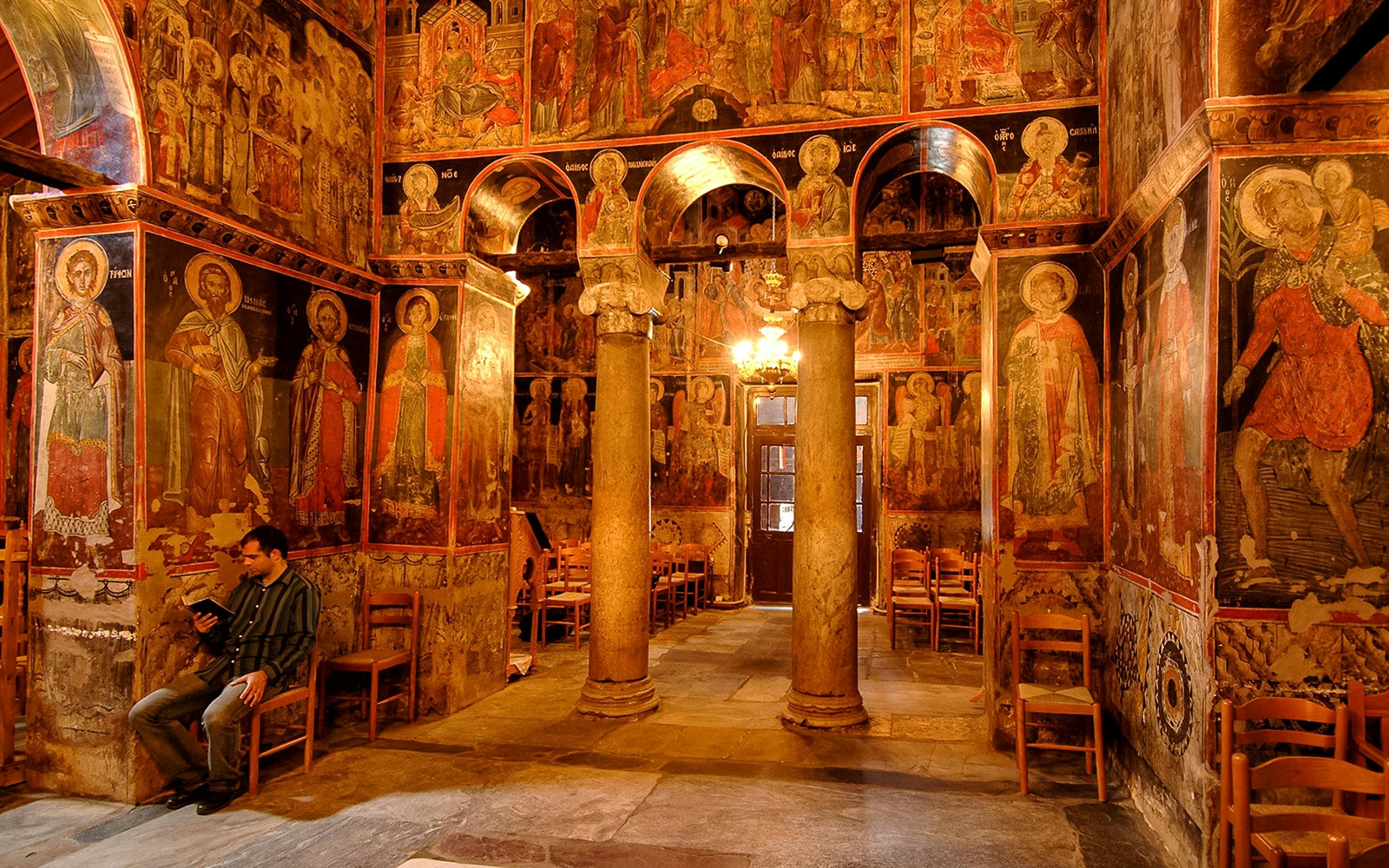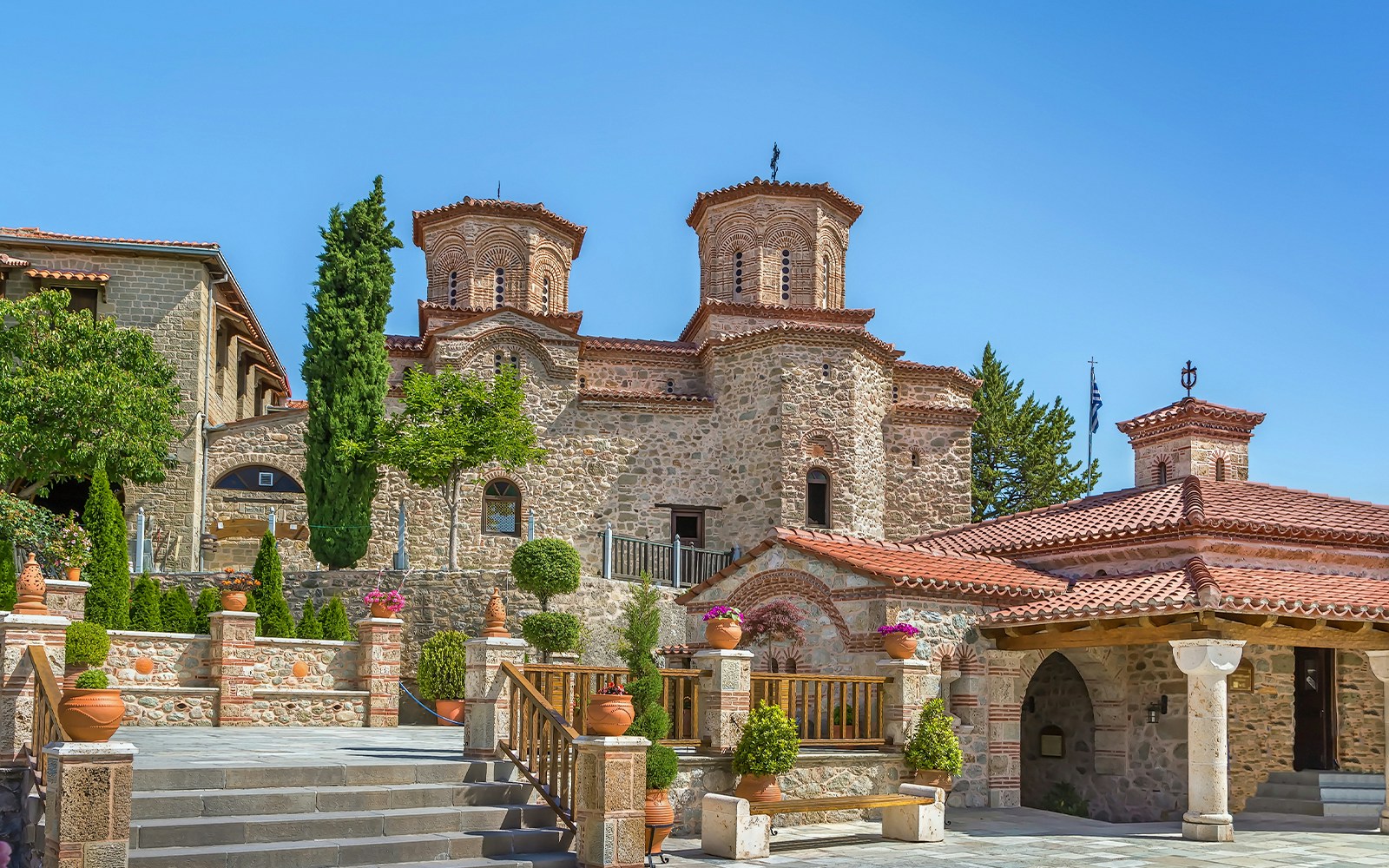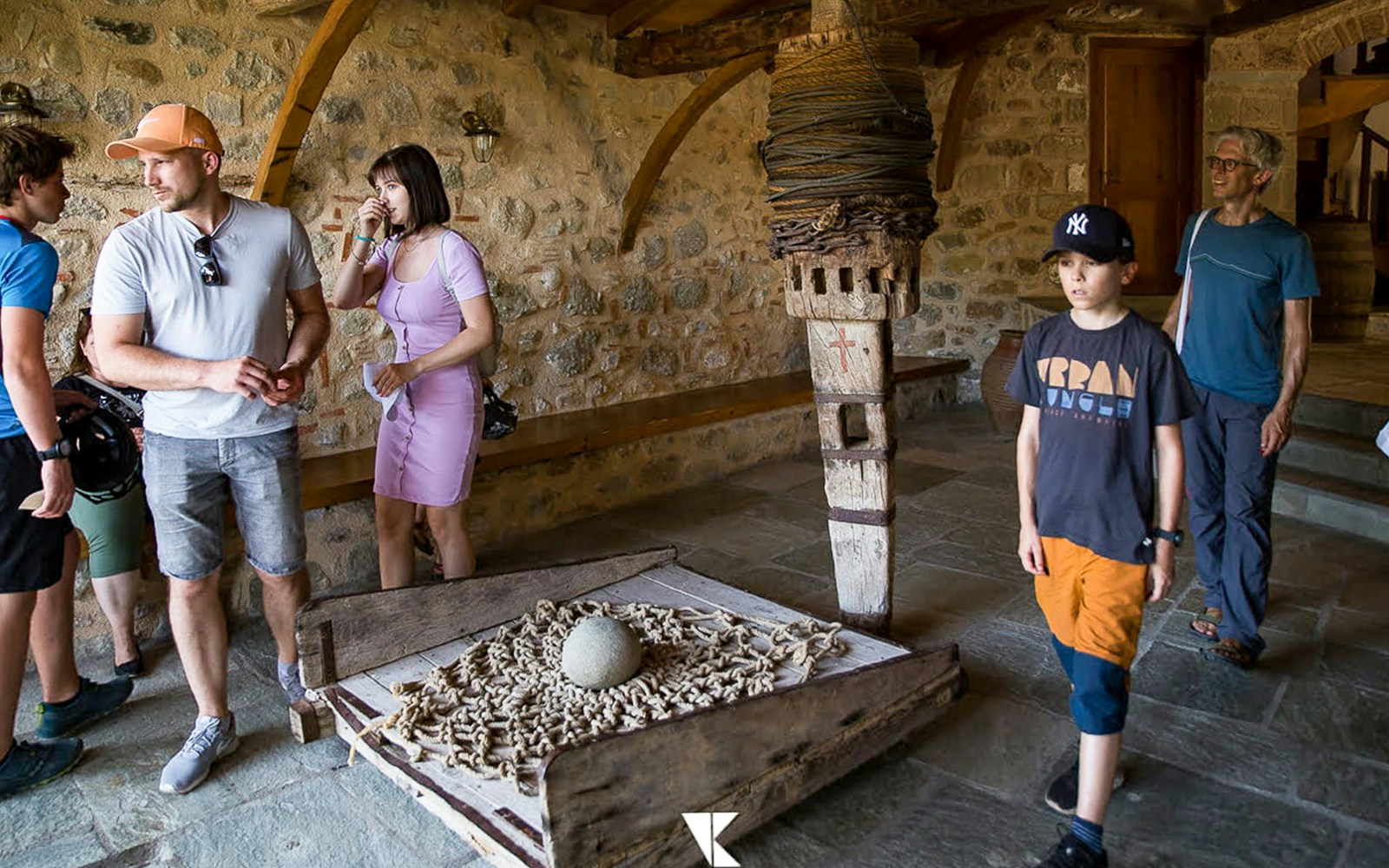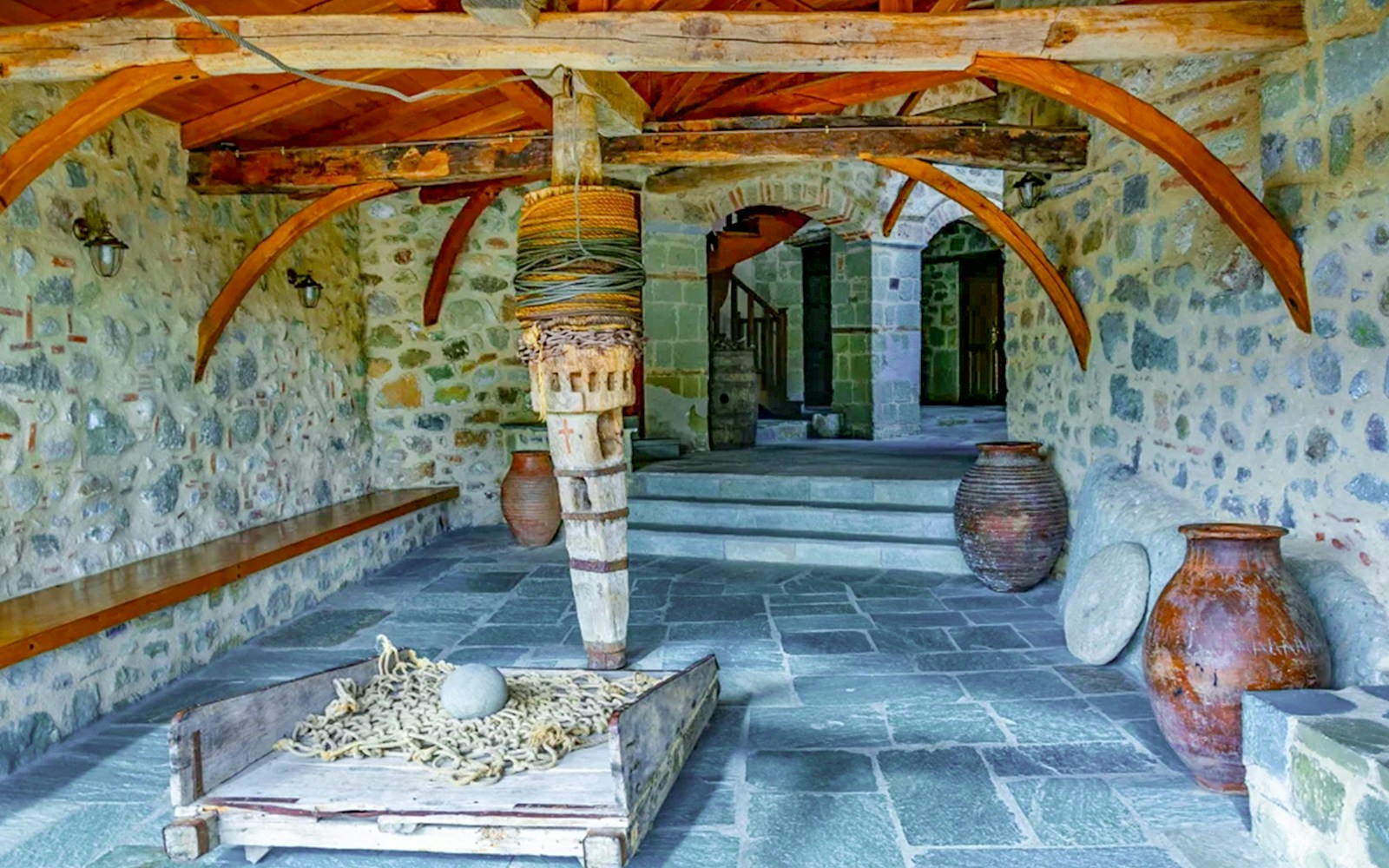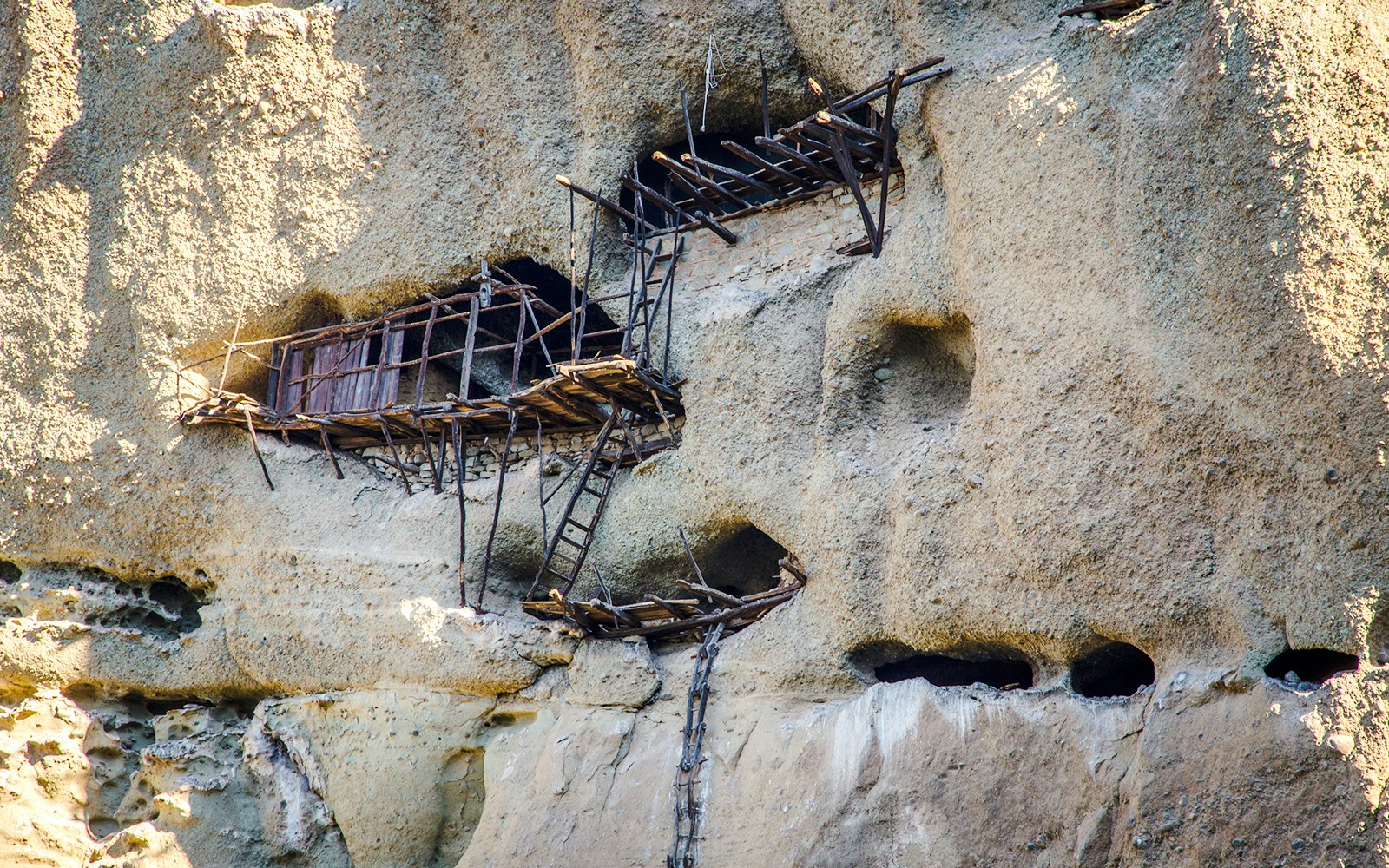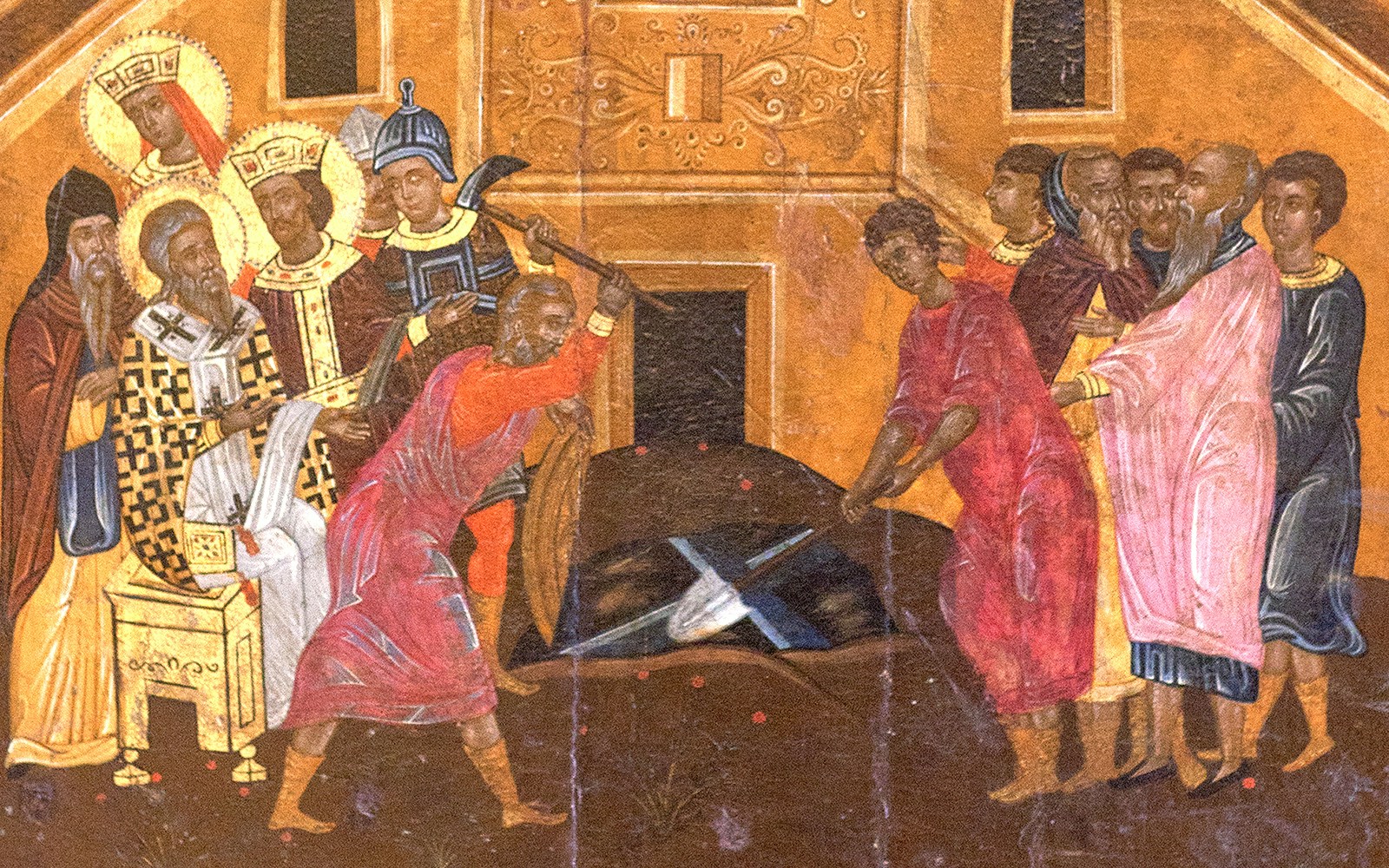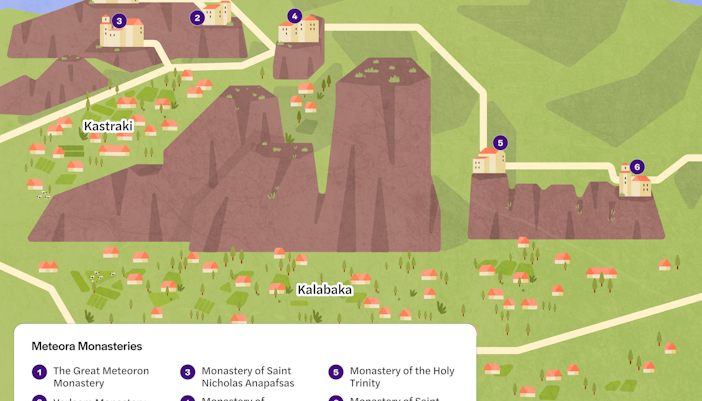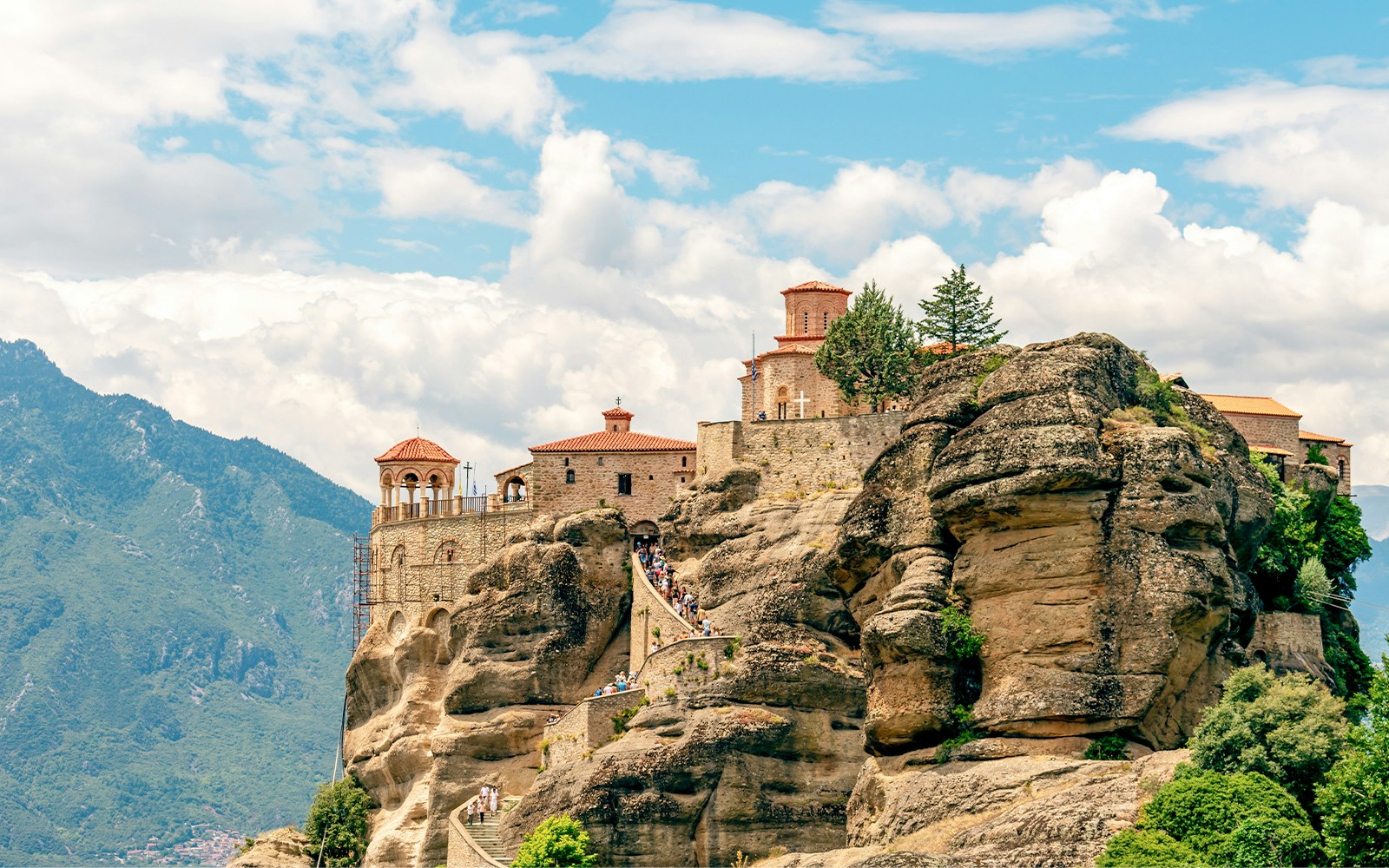Why the Monastery of Varlaam is a must-see in Meteora
Giant wine barrel
Inside, you’ll find a massive 16th-century oak cask that once stored up to 12,000 liters of wine, a reminder that monasteries were also centers of production, supplying not just monks but passing pilgrims and visitors.
Sacred relics
At Varlaam, you come face to face with relics of St. Andrew and St. John the Baptist. For many, these aren’t just museum pieces; they turn your visit from simple sightseeing into a spiritual encounter at one of Meteora’s most revered sanctuaries.
Stone-carved stairway
The staircase you climb today was carved into the rock in the 1920s, replacing the rope baskets and swaying ladders monks relied on for centuries. Each step gives you safe passage and a vivid sense of what life was like when this cliff-top sanctuary was nearly cut off from the world.
